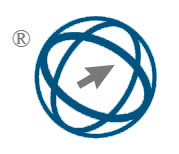A Novel Fuzzy C-Means Clustering Framework for Accurate Road Crack Detection: Incorporating Pixel Augmentation and Intensity Difference Features
Abstract
Full Text:
PDFReferences
Diahao Ai, Guiyuan Jiang, Lam Siew Kei and
Chengwu Li (2018), ‘Automatic Pixel-Level
Pavement Crack Detection Using Information
of Multi-Scale Neighborhoods’, IEEE
Transactions, Vol. 6, pp. 24452-24463.
Arun Mohan, Sumathi Poobal (2018), ‘Crack
Detection using image processing: A critical
review and analysis’, Alexandria Engineering
Journal, vol. 57, pp. 787-79.
Yuming Zhang, Cong Chen, Qiong Wu, Qi Lu,
Su Zhang, Guohui Zhang (2018), ‘A KinectBased Approach for 3D Pavement Surface
Reconstruction and Cracking Recognition’,
IEEE Transactions, pp. 1-12.
Dan Wang, Zaijun Zhang, Jincheng Zhou,
Benfei Zhang, and Mingjiang Li (2022),
‘Comparison and Analysis of Several
Clustering Algorithms for Pavement Crack
Segmentation Guided by Computational
Intelligence’, Hindawi Computational
Intelligence and Neuroscience, Vol. 2022,
pp.1-13.
Munish Bhardwaj, Nafis Uddin Khan, Vikas
Baghel (2024), ‘Fuzzy C-Means clustering
based selective edge enhancement scheme for
improved road crack detection’, Engineering
Applications of Artificial Intelligence, Vol.
, pp. 1-14.
Vidya Dhanve, Meeta Kumar (2017),
‘Detection of brain tumor using k-means
segmentation based on object labeling
algorithm’, IEEE International Conference,
pp. 944–951, 2017.
Abdul Rahim Ahmad, Muhammand Khusairi
Osman, Nor Aizam Muhamed Yusof (2020),
‘Image segmentation for pavement crack
detection system’, IEEE conference, pp.153-
Munish Bhardwaj, Nafis Uddin Khan, Vikas
Baghel, Santosh Kumar Vishwakarma, and
Abul Bashar (2022), ‘Brain tumor image
segmentation using K-means and fuzzy Cmeans clustering’, Digital Image Enhancement
and Reconstruction Elsevier Inc., pp. 293-316.
James C. Bezdek, Robert Ehrlich, Willam Full
(1984), ‘FCM: The Fuzzy C-Means Clustering
Algorithm’, Computers & Geosciences, 10 (2-
, 191-203.
Munish Bhardwaj, Nafis Uddin Khan, Vikas
Baghel (2023), ‘Improved Road Crack
detection using Historam Equalization Based
Fuzzy-C Means Technique’, IEEE conference
on PDGC. DOI:
1109/PDGC56933.2022.10053319.
Nor Ashidi Mat Isa, Samy A. Salamah and
Umi Kalthum Ngah (2009), ‘Adaptive Fuzzy
Moving K-means Clustering Algorithm for
Image Segmentation’, IEEE Transactions on
Consumer Electronics, Vol. 55, No. 4, pp.
-2153.
Munish Bhardwaj, Nafis Uddin Khan, Vikas
Baghel (2024), ‘Road crack detection using
pixel classification and intensity-based
distinctive fuzzy C-means clustering, The
Visual Computer.
Tao Lei, Xiaohong Jia, Yanning Zhang, Lifeng
He, Hongying Meng, Asoke K. Nandi (2018),
‘Significantly Fast and Robust Fuzzy C-Means
Clustering Algorithm Based on Morphological
Reconstruction and Membership Filtering’,
IEEE Transactions on Fuzzy systems, Vol. 26,
Issue 5, pp. 3027-3041.
Qingsheng Wang, Xiaopeng Wang, Chao
Fang, Wenting Yang (2020), ‘Robust fuzzy cmeans clustering algorithm with adaptive
spatial & intensity constraint and membership
linking for noise image segmentation’,
Elsevier applied soft computing, Vol. 92, pp.
-14.
Yohwan Noh, Donghyun Koo, Yong-Min
Kang, Dong Gyu Park, DoHoon Lee (2017),
‘Panop Khumsap, Automatic Crack Detection
on Concrete Images Using Segmentation via
Fuzzy C-means Clustering’, IEEE-ICASI, pp.
-880.
A. Cubero Fernandez, Fco. J. Rodriguez
Lozano, Rafael Villatoro, Joaquin Olivares and
Jose M. Palomares (2017), ‘Efficient pavement
crack detection and classification’ EURASIP
Journal on Image and Video Processing, pp.1-
Yashon O. Oumaa, M. Hahn (2017), ‘Pothole
detection on asphalt pavements from 2Dcolour pothole images using fuzzy c-means
clustering and morphological reconstruction’,
ELSEVIER automation and construction, vol.
, pp. 196-211.
Yong Shi, Limeng Cui, Zhiquan Qi, Fan
Meng, and Zhensong Chen (2016), ‘Automatic
Road Crack Detection Using Random
Structured Forests’, IEEE Transactions on
Intelligent Transportations Systems, pp. 1-12.
Weixing Wang , Lei Li, Ya Han (2021),
‘Crack detection in shadowed images on gray
level deviations in a moving window and
distance deviations between connected
components’, Construction and building
material Elsevier, Volume 271, pp. 1-12.
Z. Sun, L. Pei, W. Li, H. Xueli, and C. Yao
(2020), ‘Pavement en-capsulation crack
detection method based on improved Faster RCNN’, Journal of South China University of
Technology (Natural Science Edition), vol. 48,
no. 2, pp. 84–93.
Xiaoran Feng, Liyang Xiao, Wei Li, Lili Pei,
Zhaoyun Sun, Zhidan Ma, Hao Shen, and
Huyan Ju (2020), ‘Pavement Crack Detection
and Segmentation Method Based on Improved
Deep Learning Fusion Model’, Hindawi
Mathematical Problems in Engineering, Vol.
, pp. 1-22.
Jie Luo, Huazhi Lin, Xiaoxu Wei and
Yongsheng Wang (2023), ‘Adaptive Canny
and Semantic Segmentation Networks Based
on Feature Fusion for Road Crack Detection’,
IEEE Access, Vol. 11, pp. 51740- 51753.
Chengjia Han, Tao Ma, Ju Huyan, Xiaoming
Huang, and Yanning Zhang (2022), ‘Crack WNet: A Novel Pavement Crack Image
Segmentation Convolutional Neural Network’,
IEEE Transactions on Intelligent
Transportations Systems, Vol. 23, no. 11, pp.
- 22144.
Li Fan and Jiancheng Zou (2023), ‘A Novel
Road Crack Detection Technology Based on
Deep Dictionary Learning and Encoding
Networks’, MDPI applied sciences, Vol.
(22), pp. 1-20.
Weidong Song, Guohui Jia, Di Jia and Hong
Zhu (2019), ‘Automatic Pavement Crack
Detection and Classification Using Multiscale
Feature Attention Network’, IEEE Access, Vol
, pp. 171001- 171012.
Jong-Hyun Kim and Jung Lee (2023),
‘Efficient Dataset Collection for Concrete
Crack Detection with Spatial-Adaptive Data
Augmentation’, IEEE Access, Vol. 11, pp.
-121913.
Rafael C. Gonzalez, Richrad E Woods (2002),
‘Digital image processing’, Pearson Hall, ch.
, pp 125–134.
Yuwen Quan, Jie Sun, Yang Zhang and
Haiwei Zhang (2019), ‘The Method of the
Road Surface Crack Detection by the
Improved Otsu Threshold’, IEEE International
Conference on Mechatronics and Automation,
pp. 1615-1620.
Junde Chen, Yuxin Wen, Yaser Ahangari
Nanehkaran, Defu Zhang, and Adan Zeb
(2023), ‘Multi-scale attention networks for
pavement defect detection’, IEEE
Transactions on Instrumentation and
measurement, Vol. 72, pp. 1-12.
Lili Pei, Zhaoyun Sun, Liyang Xiao, Wei Li,
Jing Sun, He Zhang (2021), ‘Virtual
generation of pavement crack images based
on improved deep convolutional generative
adversarial network’, Engineering
Applications of Artificial Intelligence,
Volume 104.
Zihao Liu (2024), “Road Crack Detection
System Using Image Segmentation
Algorithm”, PCCNT ’23, no. 49, pp. 1-6
DOI: https://doi.org/10.31449/inf.v49i15.7082

This work is licensed under a Creative Commons Attribution 3.0 License.









